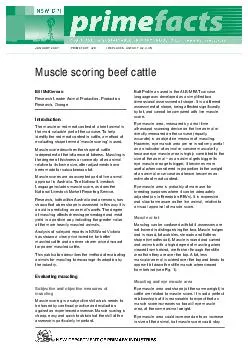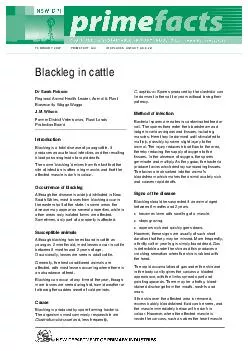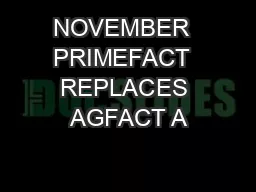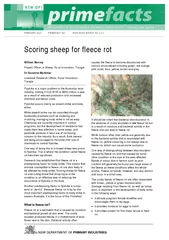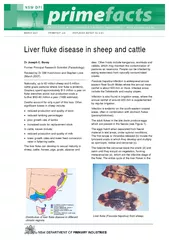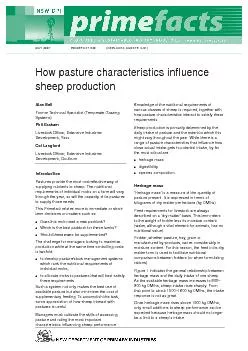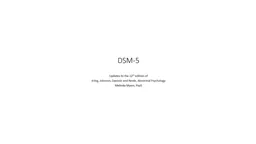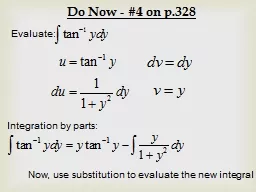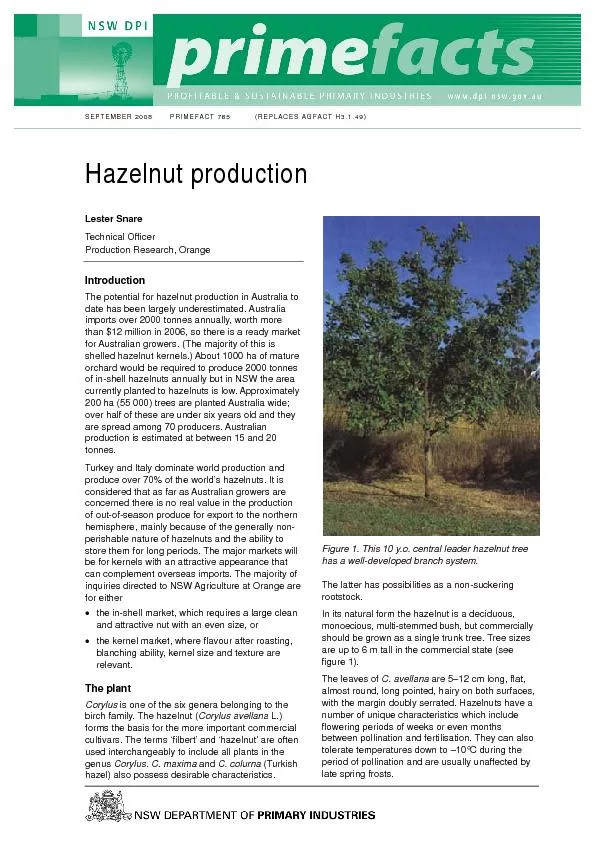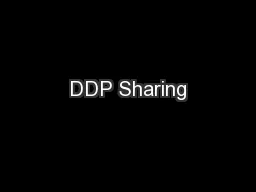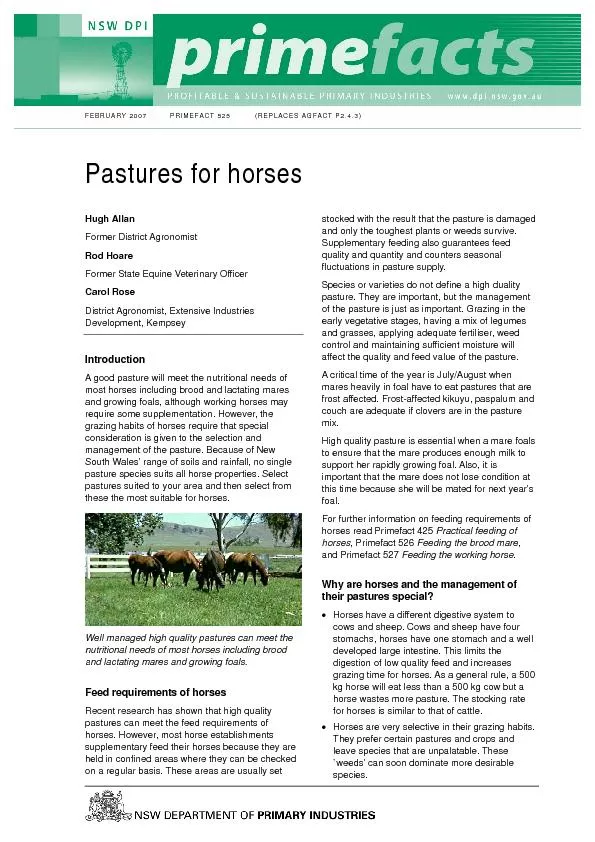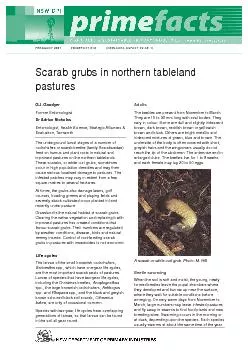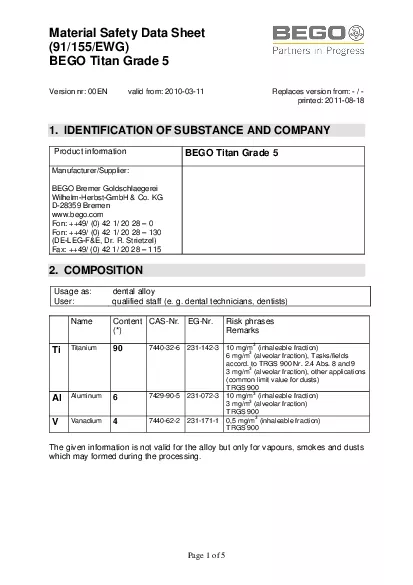PDF-JANUARY 2007 PRIMEFACT 328 (REPLACES AGFACT A2.3.35)
Author : lois-ondreau | Published Date : 2016-06-29
Muscle scoring beef cattle Bill McKiernan Research Leader Animal Production Production Introduction the most valuable part of the carcase To help identify the red
Presentation Embed Code
Download Presentation
Download Presentation The PPT/PDF document "JANUARY 2007 PRIMEFACT 328 (REPLACES AG..." is the property of its rightful owner. Permission is granted to download and print the materials on this website for personal, non-commercial use only, and to display it on your personal computer provided you do not modify the materials and that you retain all copyright notices contained in the materials. By downloading content from our website, you accept the terms of this agreement.
JANUARY 2007 PRIMEFACT 328 (REPLACES AGFACT A2.3.35): Transcript
Download Rules Of Document
"JANUARY 2007 PRIMEFACT 328 (REPLACES AGFACT A2.3.35)"The content belongs to its owner. You may download and print it for personal use, without modification, and keep all copyright notices. By downloading, you agree to these terms.
Related Documents

